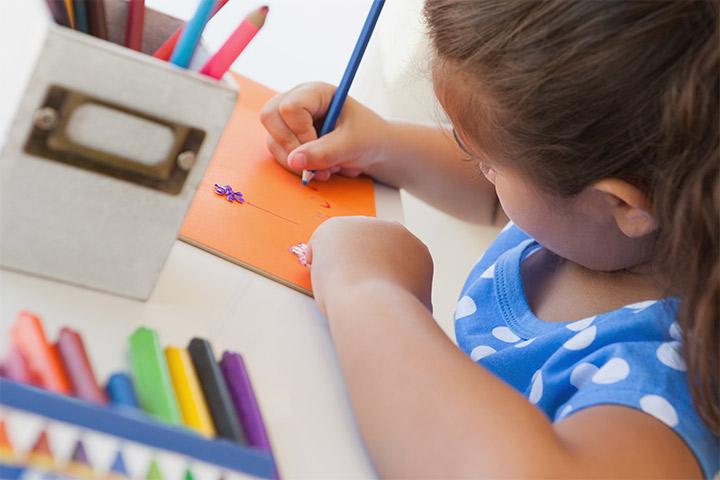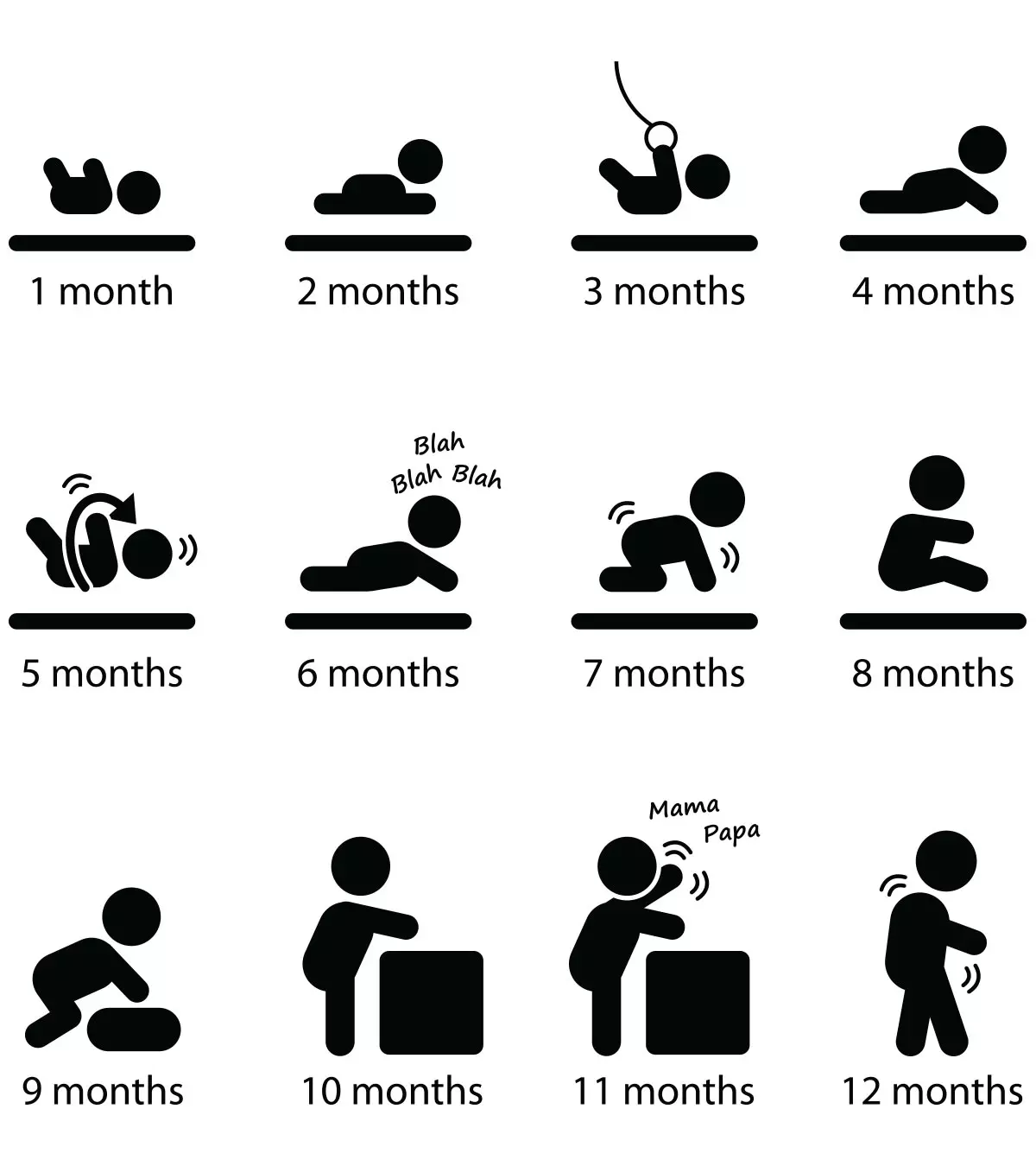
Image: ShutterStock
‘Self-esteem is the reputation we acquire with ourselves.’ – Nathaniel Branden

Every parent wants to build self-esteem in children. They would love to watch them grow confident of their abilities and respect themselves for who they are. However, sometimes children seem to exhibit poor self-worth due to different reasons. This may be discouraging for parents, but it is important to understand that they play a critical role in building their children’s personalities. Children’s behavior starts being influenced from a young age, so you need to devise self-esteem strategies from the beginning.
Read on to learn about self-esteem building and help instill self-love and self-respect in your children. We have also included activities that would encourage positive self-development.
Key Pointers
- Self-esteem is shaped by a person’s perception of themselves and others, which can be influenced by early-life experiences.
- High self-esteem in children leads to optimism and confidence, while low self-esteem can cause stress.
- Parents play a significant role in shaping their child’s self-esteem.
- Allowing children to make choices and tackle challenges can boost their confidence.
- Activities that promote self-confidence and pride can help raise self-esteem.
What Is Self-Esteem?
In simple terms, self-esteem is what we think of ourselves. Our sense of ourselves in the world emerges as a developmental process over time beginning with our earliest relationships.
Children with a positive sense of self tend to have better emotional health, greater resilience, and high confidence and hope during interactions. Children whose sense of self is less positive may struggle with anxiety and feelings of hopelessness.
Jessica Mathis, a blogger and a mental health advocate, narrates her experience of dealing with low self-esteem in her childhood. She says, “My low self-esteem stems from childhood. I received the implicit message that I wasn’t good enough. My worth was based on my behavior — it was conditional. When my behavior was ‘good,’ I was perceived and treated like I was ‘good.’ At any other time, I was treated as though I were bad or defective. Through other implicit and possibly unintentional means, I felt neglected and ignored. My needs, wants, and desires were not treated as important. I wasn’t encouraged or supported enough to grow and thrive as a kid, and it resulted in many issues, including a shaky sense of self and low self-esteem (i).”
Our sense of ourselves in the world has its roots in early development but changes and grows over time in relationships throughout our lives.
Why Is Self-Esteem Important?
Self-esteem shapes our personality in different ways.
- Helps make deep and meaningful relationships with others.
- Helps build resilience. High self-esteem helps one deal with adversities and get back on their feet after a bad fall. It helps digest rejections and failures to make a bigger comeback.
- When you are clear about what you feel and want, it helps you be more confident.
- Helps draw realistic expectations. When your self-esteem is high, you are aware of your strengths and weaknesses, which puts you in a better position to set and achieve realistic goals.
Building Self-Esteem In Children
Helping your child to work through difficult moments with you and other people in their lives is the most effective way to build a positive sense of self. Your child learns that when things go wrong, they have the ability to make things better. This in turn gives them a sense of effectiveness in the world. The process of repairing mistakes gives energy to your child and your relationship. It gives them a sense of resilience and hope. In contrast, avoiding conflict in an effort to make things smooth can create a sense of anxiety and fear of disruption.
Self-esteem in children begins to develop very early, and the parent plays a critical role in building it (1) As parents are the most influential people in a young child’s life, what they say or do and how they make the child feel impacts their child’s development. Here are a few ways in which you can help your child develop a healthy sense of self (2) (3).
- When children feel loved and accepted unconditionally, it helps them to develop a positive sense of self. When you speak kind words, our children will feel loved and good about themselves. A hug, kiss, or even a simple smile can be enough to let your child know you love them.
- Focus on the child’s strengths and not on their flaws. Encourage them to use their talents. At the same time, help them identify things that are challenging for them and find ways to work on them.
- Let your child understand that it is not only okay but important not to succeed sometimes. Teach your child to be comfortable with failure. Learning new skills can lead to self-empowerment. Engage them in activities like gardening, doing the dishes, creating presentations, or even changing a tire—tasks that allow them to demonstrate their abilities and lead small groups to boost their self-esteem and encourage self-improvement.
- Having the power to choose can help to build a positive sense of self. It helps to teach them to have a sense of responsibility for their decisions. Start small, with simple choices, before giving them responsibility for more significant life choices.
 Quick tip
Quick tip- When you solve a problem, big or small, you experience a feeling of accomplishment. So the next time your child has a problem, give them space to try to solve it themselves. Doing so will boost their confidence and self-esteem.
- Talk to your children about the importance of a healthy lifestyle and taking care of themselves. If your children show an interest in an activity, sport, or learning a new skill, if the activity is within reason and accessible, encourage them to try and experience it. For instance, if the child wants to learn martial arts, encourage them and tell them it needs practice and discipline, which might mean waking up early for strength training and hours of practice. This will promote self-discipline.
- Encouragement is good, but excessive nonspecific praise can do more harm than good. Overusing phrases such as “good job” or “awesome” to praise the child may backfire. Simply noticing your child’s activities and naming them specifically can do more to boost self-esteem than non-specific praise. For example, rather than comment on a child’s drawing with “great job” you might say, “I notice you used a lot of purple in your drawing.” Your interest and attention are more valuable than general praise, which in excess can feel meaningless.
Self-esteem Games And Activities For Kids
If you are wondering how to build confidence in kids, here are a few games and activities that can build a child’s self-confidence.
1. ‘I am’ activity

Is your child proud of their achievements or do they tend to be excessively self-critical?
You can explore the question with this activity.
You will need:
Chart or drawing paper, cutouts of adjectives from magazines, glue, color pen or sketch pen
How to:
- Ask your child to list down words that describe them on a piece of paper. It can be negative or positive.
- Then ask them to focus only on the good things that people have said about them and make a list of that.
- Paste the photo of the child in the center of the drawing or chart paper.
- Ask the child to fill the area around the picture with positive words, adjectives that she can relate to.
- Put the drawing sheet or paper in her room to reinforce positive self-belief.
This activity may also inspire self-validation and self-acceptance.
2. List your wins in life
An effective way to encourage self-motivation is to remind children of their successes.
You will need:
A sheet of paper, pen
How to:
- Give your child a pen and paper or notebook.
- Start by writing down the list of successes in life on the front page, leaving space at the bottom to add more later.
- To remind the child of her potential, you can also ask her to list down her wins every day, before she goes to bed.
- Emphasize that failures are not only ok, but they are important. Take time to notice when your child successfully works through a difficult moment.
 Quick tip
Quick tip3. I am afraid but…
Fear is a typical feeling for children. Here is an activity for children to face their fears and talk about them.
You will need:
Paper and pen
How to:
- Ask your child to list out the things she is afraid to do. For instance, she could be afraid to go to swimming classes. Or she is scared of doing a class presentation.
The sentences should be something like this:
I am afraid to enroll in the swim team because …
I am afraid to talk to so and so because…
- The second step is to imagine doing the thing they fear. Imagine registering for that swim team or talking to that person.
- Every time the child writes down what they are afraid of, ask them to write what the possible outcomes would be if they tried it. And next to the negative outcome, get them to write something about possible positive outcomes and watch them exude self-assurance.
4. Mother-daughter self-esteem activity

Mother-daughter relationships tend to be powerful and also filled with fraught moments. This activity taps into the mother-daughter bond to work on the girl’s self-esteem.
You will need:
Poster or chart papers, sketch pens or color pens
How to:
- Make two posters with the word ‘ME’ stenciled on them, so that you can fill the letters with text.
- Create another poster with the words “MY MOM” and another with “MY GIRL” stenciled on them.
- Give the child one “ME” poster and the “MY MOM” poster and ask her to fill it with positive things about herself and her mother. Let the mom work on the remaining two.
- Let them exchange the posters or read out the compliments they have for each other.
5. Chore with a purpose
A child’s self-esteem can get a quick boost when they know someone trusts them. What better way to show your child that you trust them than by giving them responsibility for a chore.
How to:
- Make a list of things that your child can do to care for the environment and animals around them. For example, walking the dog, watering the plants, or mopping the floor.
- Every time the child completes the task successfully, compliment them but do not overdo it.
- If they make mistakes, help them correct the mistake but do not dwell on it. Chores can contribute to building your child’s self-confidence.
6. Visualization

Our negative thoughts can be so overpowering sometimes that we cannot imagine something nice. If your child is going through such a phase, this activity can help.
You will need:
A calm or quiet place to relax.
How to:
- Find out why your child thinks they are not good or what they are afraid of doing.
- For example, if they are worried about school or performance in a sport, focus on that.
- Ask them to imagine and write down what the ideal scenario, in either case, would be.
- Then, ask your child to close their eyes and imagine the ideal scenario, and how she would feel if it were real.
- Ask them to write down how they felt when they visualized the ideal situation and what they thought about themselves.
7. Changing self-talk
Negative self-talk is a sign of low self-confidence. It may help to point this language out and help your child not to speak negatively about themselves. This activity may help change the negative conversations with the self into positive ones.
You will need:
Pen and paper
How to:
- Make two columns on a sheet of paper. On one side, write “Bad or Negative self-talk for kids” and on the other, write “Good or Positive self-talk for kids”.
- Ask your child to list all negative statements that they make about themselves under the Bad self-talk column.
- Next, ask your child to turn the negative statements into positive ones. The statements should be clear and specific to the talents or abilities of your child.
You could help by giving the child an example in the beginning. Share how you change your negative self-talk into a positive one and how that helps you. This may help them with their self-image and self-perception issues.
Frequently Asked Questions
1. What are the signs of low self-esteem in a child?
Signs that may indicate low self-esteem in children include (4):
- Avoids a challenge or task without trying it or giving up too soon
- Cheats or lies to avert defeat
- Acts baby-like or becomes too bossy or inflexible
- Makes excuses and blames others or external forces.
- Socially withdrawn, seems disinterested in activities, and scores low academic grades
- Sad, angry, and frustrated or quiet most of the time
- Makes self-critical comments, such as “I cannot do anything right.”
- Finds it difficult to accept either praise or criticism and is over-sensitive about others’ opinions of them
- Susceptible to negative influences from friends or social media.
2. What causes low self-esteem in a child?
A child may develop low self-esteem due to (5):
- Bullying by other children
- Trauma such as physical or sexual abuse, disasters, severe health issues, or loss of a loved one
- Shaming or fear-based teaching techniques applied by parents or teachers or high-performance pressure
- Parents who disapprove of them most of the times
- Social media influence may develop self-doubt in children and make them think they are not as good as others (6)
3. How can teachers promote self-esteem in their students?
Teachers have a vital role in boosting students’ self-esteem. They achieve this by recognizing their feelings and needs, creating trust, setting achievable goals, and supporting their progress. Additionally, they see mistakes as chances to learn and empower students by believing in their abilities and offering assistance (7).
4. What role do peers play in building self-esteem in children?
Peers protect and stabilize a child’s overall self-esteem. A study shows that when children have distant relationships with parents, being accepted by peers helps prevent negative effects. Peer acceptance is valuable for self-esteem, especially when children aren’t close to their parents (8).
5. How can parents teach their children to value their own opinions and beliefs?
Parents can teach their children to value their opinions and beliefs by modeling healthy behaviors such as self-confidence, resilience, respect, and kindness. They should offer uplifting compliments and consistent support to boost their child’s self-esteem. Encouraging them to solve problems and make age-appropriate decisions builds resilience (9).
6. How can technology impact a child’s self-esteem?
Technology can harm a child’s self-worth via social media and texting. The absence of non-verbal cues causes misunderstandings, and comparing with others online fosters inadequacy. Parents can guide by example, create tech-free areas, and nurture their child’s talents and passions for improved self-esteem (10).
7. What are the 3 types of self-esteem?
The three types of self-esteem are overly high self-esteem, low self-esteem, and healthy self-esteem. Overly high self-esteem means feeling better than others and acting arrogantly. Low self-esteem means feeling worse than others and giving more importance to their opinions than our own. Healthy self-esteem is having a realistic view of ourselves, and acknowledging our strengths and weaknesses while having reasonable expectations (11).
8. How can I measure my child’s self-esteem?
You can assess your child’s self-esteem by observing their ability to make friends, their confidence in social situations, and how they handle challenges. Alternatively, you can engage in open conversations about their feelings or use tools like the Coopersmith Self-Esteem Inventory (CSEI), which assesses self-worth across various domains, including school, family, and peer relationships.
As parents, you play a significant role in building self-esteem in your children. The way you encourage them to get back up and console them every time they fail motivates them and induces a sense of confidence. You can build self-esteem in children by helping them overcome their anxiety and fear. They need to believe that making mistakes is okay as long as they learn from them and correct them. So you may try some of the above-mentioned activities and games to build self-esteem in children and make them grow into confident individuals.
Infographic: Identifying If Your Child Has Negative Or Positive Self-Esteem
It is essential to understand if your children have low self-esteem. If the right help is not given to them on time, it may affect their mindset as an adult. Observe them and identify their behavior through this infographic so you can boost their morale from the very moment.
Some thing wrong with infographic shortcode. please verify shortcode syntax
Illustration: Tips To Build Self-Esteem In Children & Activities To Do

Image: Stable Diffusion/MomJunction Design Team
Every parent wants to instill self-confidence in their children. But, how? This video analyzes on wealth of proven strategies aimed at fostering your child’s self-assurance and leading them into triumphs and accomplishments.
Personal Experience: Source
MomJunction articles include first-hand experiences to provide you with better insights through real-life narratives. Here are the sources of personal accounts referenced in this article.
i. Build Self-Esteem with These Tips and Exercises.https://medium.com/the-post-grad-survival-guide/build-self-esteem-with-these-tips-and-exercises-9cf4e10291e9
References
- Self-esteem in children: 1-8 years.
https://raisingchildren.net.au/toddlers/behaviour/understanding-behaviour/about-self-esteem - Helping Your Child Develop A Healthy Sense of Self Esteem.
https://healthychildren.org/English/ages-stages/gradeschool/Pages/Helping-Your-Child-Develop-A-Healthy-Sense-of-Self-Esteem.aspx - Your Child’s Self-Esteem.
https://kidshealth.org/en/parents/self-esteem.html - Signs of Low Self-Esteem.
https://www.healthychildren.org/English/ages-stages/gradeschool/Pages/Signs-of-Low-Self-Esteem.aspx - Why the Causes of Low Self-Esteem May Be Rooted in Your Childhood.
https://compasscounseling.org/why-the-causes-of-low-self-esteem-may-be-rooted-childhood/ - Social Media and Self-Doubt.
https://childmind.org/article/social-media-and-self-doubt/ - How To Enhance Self-Esteem In The Classroom.
https://www.cambridge.org/elt/blog/2025/06/16/self-esteem-enhanced-in-the-classroom/ - Peer acceptance protects global self-esteem from negative effects of low closeness to parents during adolescence and early adulthood
https://pubmed.ncbi.nlm.nih.gov/23435859/ - The many ways fathers teach their children about values.
https://www.canr.msu.edu/news/the_many_ways_fathers_teach_their_children_about_values - How Using Social Media Affects Teenagers
https://childmind.org/article/how-using-social-media-affects-teenagers/ - Self-Esteem
https://www.weber.edu/CounselingCenter/self-esteem.html
Community Experiences
Join the conversation and become a part of our nurturing community! Share your stories, experiences, and insights to connect with fellow parents.
Read full bio of Claudia M. Gold
Read full bio of Sagari Gongala
Read full bio of Harshita Makvana
Read full bio of Apoorva K

















